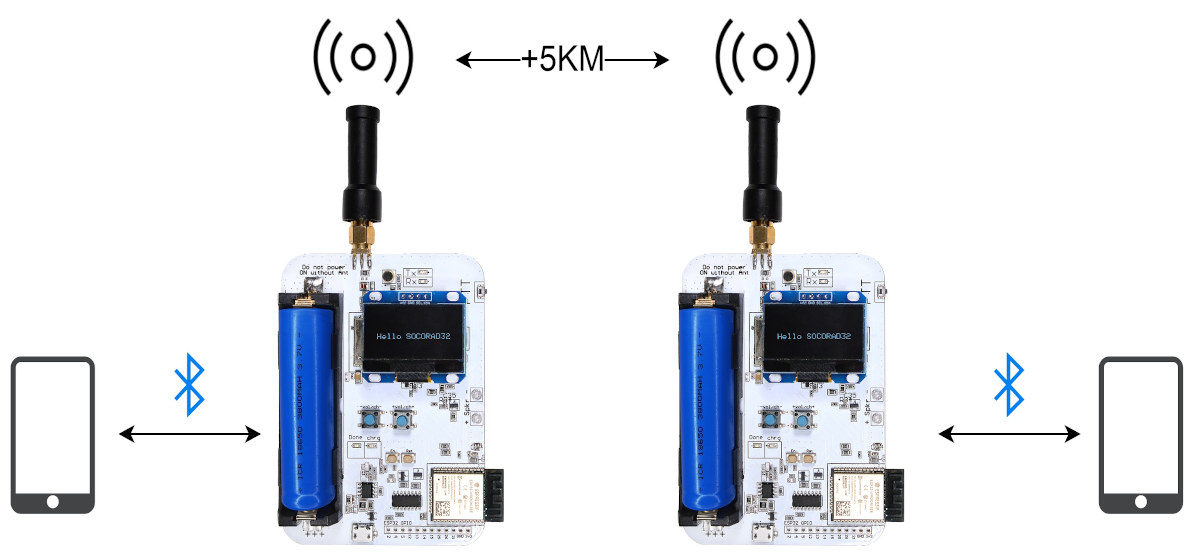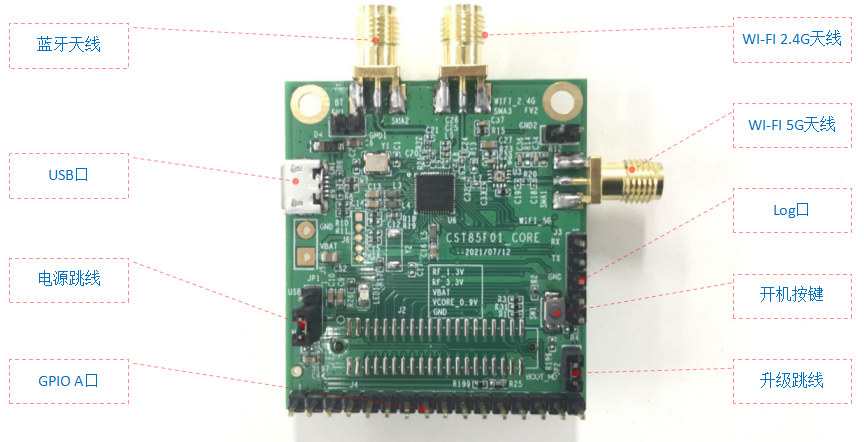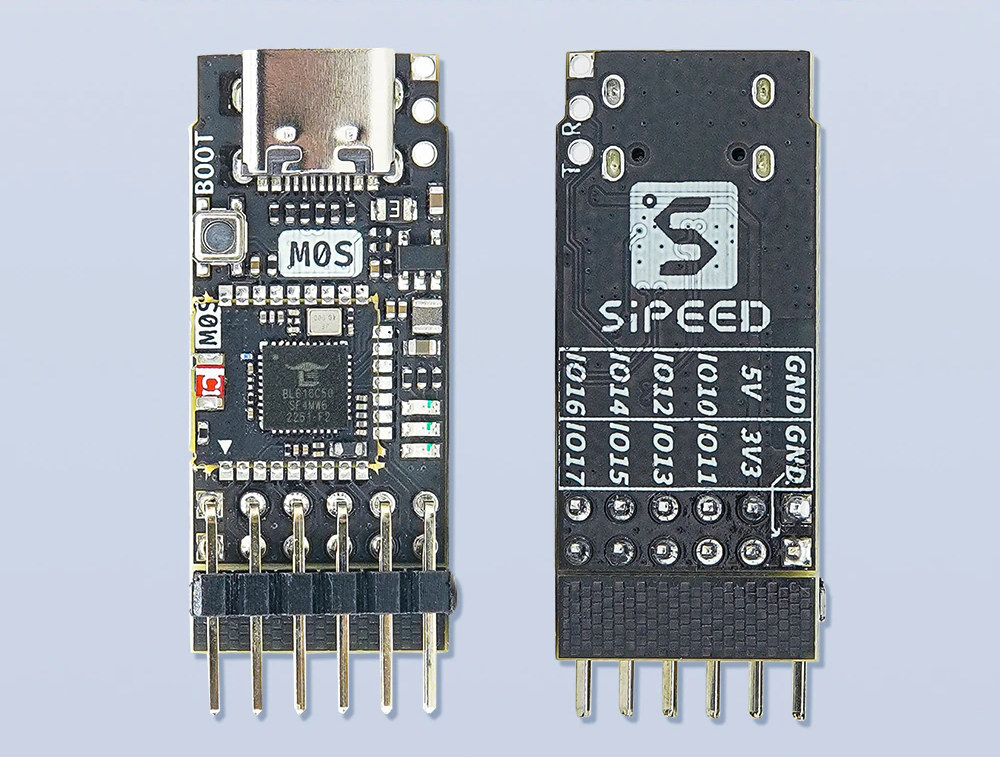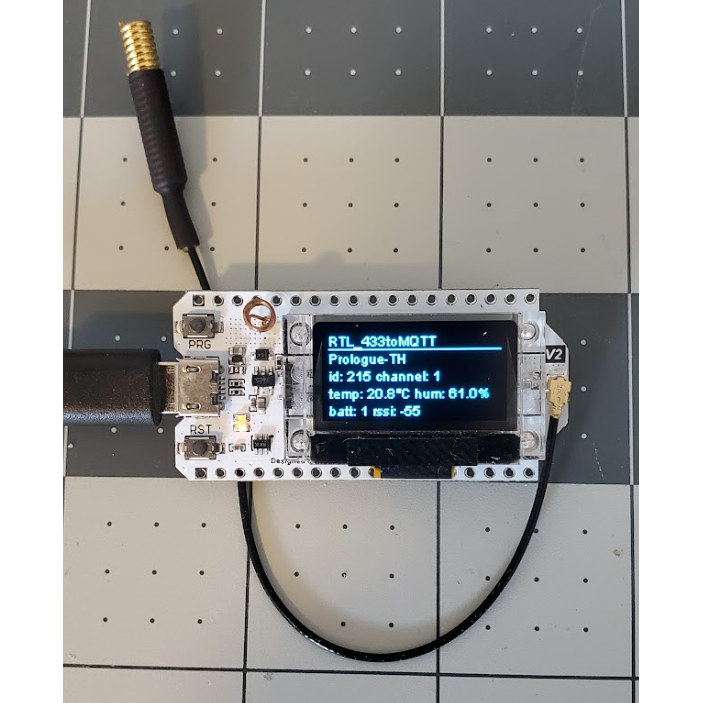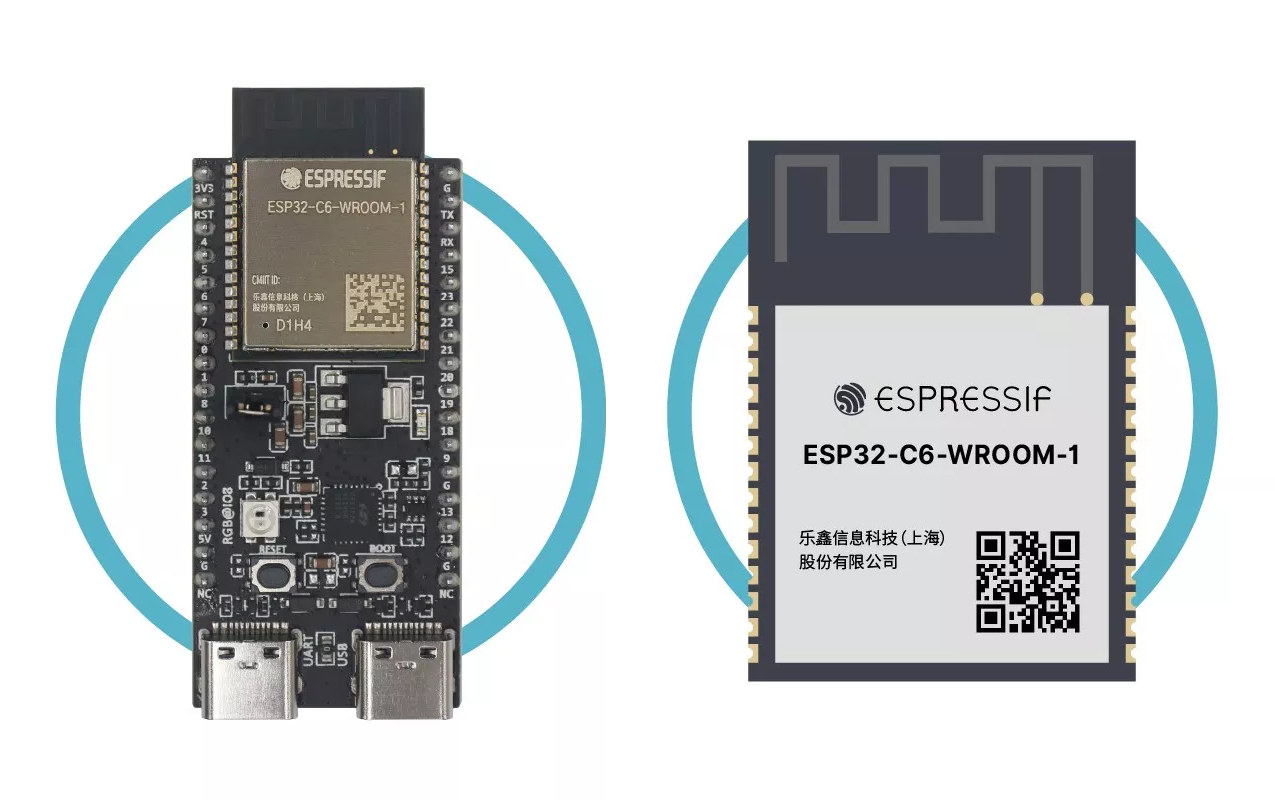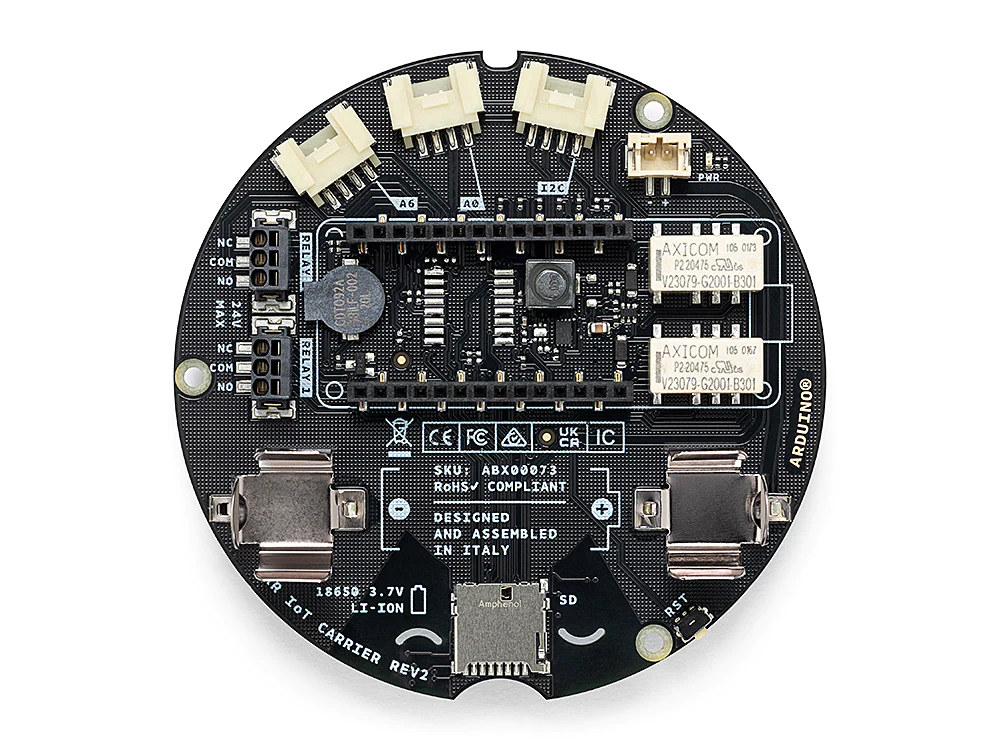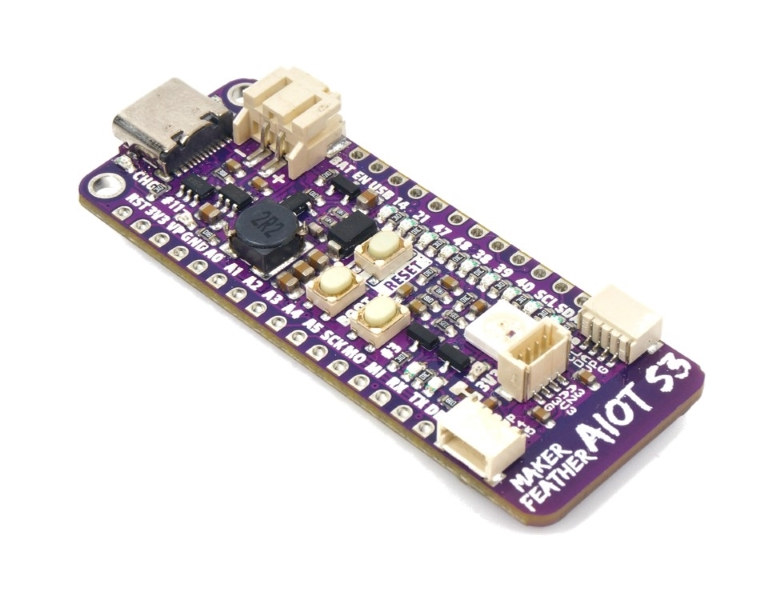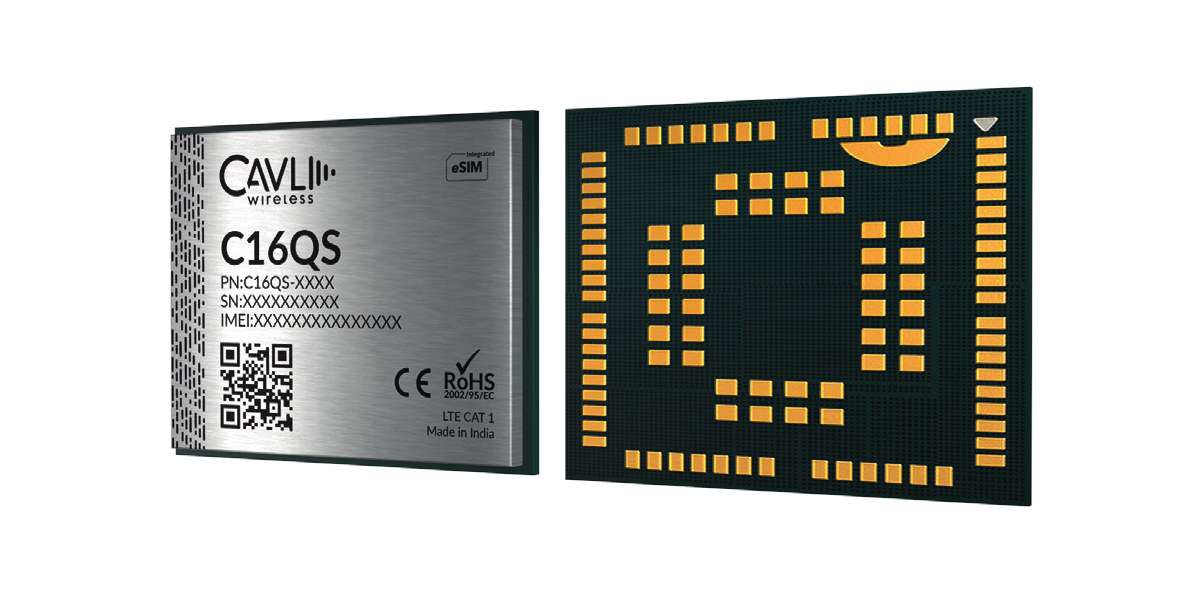SOCORAD32, aka ESP32 Software Controlled Radio, is a hackable, open-source hardware ESP32-based amateur radio board for walkie-talkie and data communication applications. The board comes with an ESP32 module with WiFi 4 and Bluetooth connectivity, an RDA Microelectronics RDA1846 RF IC used in many commercial walkie-talkies and offering a range up of to 5 km, a small display, a speaker, and a 18650 battery holder. SOCORAD32 specifications: Microcontroller module – ESP32-WROOVER-32E with ESP32 dual-core microcontroller, 4MB flash, 2.4 GHz WiFi and Bluetooth connectivity, built-in PCB antenna Walkie-talkie chip – RDA1846 single-chip transceiver for Walkie-Talkie applications (See datasheet and programming guide for details) Frequency Range: ISM 400 – 470 MHz Frequency Step: 5 K / 6.25 K / 12.5 K / 25 K RF Output Power: 2 W / 0.5 W (+5 KM @ 2 W) set to what the local law permits RF Input Sensitivity: -122 dBm Voice Scrambling: 8 type […]
CHIPSEA CST85F01 480 MHz Cortex-M4 MCU supports dual-band WiFi 6 and Bluetooth 5.0 LE
CHIPSEA CST85F01 is an Arm Cortex-M4F microcontroller clocked at up to 480 MHz and designed for IoT applications with dual-band (2.4/5.0 GHz) WiFi 6 with TWT (Target Wake Time) support, Bluetooth 5.0 LE, and a range of I/Os. Following the recent availability of 2.4 GHz WiFi 6 IoT chips such as Espressif Systems ESP32-C6 and Bouffalo Lab BL616, CHIPSEA CST85F01 offers an alternative with dual-band WiFi 6 connectivity while we are waiting for the launch of the ESP32-C5 RISC-V microcontroller. CST85F01 specifications: CPU core – Arm Cortex-M4F CPU with MPU and FPU @ up to 480 MHz Memory – 992 KB SRAM, SDR/DDR PSRAM interfaces Storage – 752 KB ROM, 8 Mbit to 128 Mbit flash WiFi features 2.4GHz/5GHz Wi-Fi 6 Data rates up to 286.8 Mbps (Tx) and 229.4 Mbps (Rx) with 20/40 MHz bandwidth Rx sensitivity – -98dBm in 11b mode, -93.5dBm in MCS0 HT20 mode Tx power […]
$4 Sipeed M0S Dock IoT development board features BL616 WiFi 6, BLE 5.2, and Zigbee RISC-V microcontroller
As expected, Sipeed has now launched the Sipeed M0S IoT module based on Bouffalo Lab BL616 RISC-V microcontroller with 2.4 GHz WiFi 6, BLE 5.2, and Zigbee connectivity along with the “Sipeed M0S Dock” development board. The M0S is a tiny module (11×10 mm) with a 320 MHz wireless MCU, a ceramic antenna, and castellated holes for I/Os, and the Sipeed M0S Dock places the module on an easy-to-use board with a USB Type-C port, a BOOT button, and a 12-pin 2.54mm pitch header. Sipeed M0S module specifications: MCU – Bouffalo Lab BL616 32-bit RISC-V (RV32IMAFCP) microcontroller @ up to 320 MHz (384 MHz overclocked) with 480KB SRAM, 4MB flash, 2.4 GHz WiFi 6, Bluetooth 5.2 dual mode, and 802.15.4 radio (Zigbee) Antenna – Ceramic antenna (red component on module) I/Os – 25 castellated holes with RGB LCD DVP camera USB 2.0 OTG up to 480 Mbps I2C, UART, SPI […]
433 MHz is not dead! Using an ESP32 board with LoRa module to talk to 433 MHz sensors
CNXSoft: This is a guest post by Florian Robert (1technophile) of the OpenMQTTGateway project about using a 433 MHz LoRa transceiver on an ESP32 board for home automation, specifically to talk to 433 MHz sensors Everyone is talking about Matter, Bluetooth, Zigbee, and Zwave, but before these complex communication technologies, we had one simple, robust one that our sensors and devices used to leverage: 433MHz. It may be too simplistic to talk about 433 MHz as a technology as there are different and various usages of this frequency. You can find it being used in numerous devices around your home, from your outdoor temperature sensors, and security sensors to the tire pressure sensors in your car. If we want to be specific, we can talk about the different radio frequencies (433 MHz, 915MHz, 868MHz, 315MHz, or 350MHz) and signal modulations OOK, ASK, FSK that we encounter behind the keyword 433MHz. […]
ESP32-C6 WiFi 6, BLE, and 802.15.4 module and development board launched!
Espressif Systems has finally launched the ESP32-C6 WiFi 6, Bluetooth 5.0 LE, and 802.15.4 IoT microcontroller by making the ESP32-C6-WROOM-1 module available on Aliexpress for $14.25 for a pack of 5 modules as well as the ESP32-C6-DevKitC-1 development board that’s out of stock on the official store at the time of writing. but somehow listed in another store for $16.22 plus shipping. Besides the availability announcement, another surprise is the 802.15.4 radio for Zigbee and Thread that was not part of the original ESP32-C6 announcement in April 2021. The ESP32-C6-DevKitC-1 development board comes with a module with 8MB flash, exposes most of the I/O’s from the ESP32-C3, and comes with two USB-C ports, two buttons, and an RGB LED. ESP32-C6-DevKitC-1 development board specifications: Wireless module – ESP32-C6-WROOM-1 with ESP32-C6 single-core 32-bit RISC-V clocked up to 160 MHz 320KB ROM, 512KB SRAM, low-power RISC-V core @ up to 20 MHz Wireless […]
Arduino MKR IoT Carrier Rev2 gets a Bosch BME688 4-in-1 environmental sensor
Arduino has launched the MKR IoT Carrier Rev2 board for Arduino MKR boards with a Bosch SensorTech BME688 4-in-1 pressure, humidity, temperature, and gas sensor replacing the HTS221 humidity sensor and LP22HB barometric pressure sensor, and the LSM6DSOX taking the place of the LSM6DS3, among other some other small changes. First sold as part of the Arduino Oplà IoT Kit, the Arduino MKR IoT Carrier eventually became available on its own in February 2021 offering a display, sensors, and I/Os for Arduino MKR boards with wireless connectivity. The company has now introduced a second revision for the Arduino MKR IoT Carrier with new sensors and repositioning of some of the components following customer feedback. Arduino MKR IoT Carrier Rev2 features & specifications: Compatible with Arduino MKR family boards with WiFi, LoRa, NB-IoT, or 3G cellular connectivity Storage – MicroSD card holder Display – Round 1.3-inch OLED display with 240×240 resolution […]
Maker Feather AIoT S3 – An ESP32-S3 board programmable with CircuitPython or Arduino
Cytron Maker Feather AIoT S3 is an ESP32-S3 board compatible with the Adafruit Feather form factor and suitable for makers and STEM education with features like LEDs for GPIOs, a buzzer, expansion headers and connectors, and support for CircuitPython & Arduino. The WiFi and Bluetooth LE IoT board also supports LiPo and Li-Ion batteries, includes a USB Type-C port for power/charging and programming, and a few buttons. It’s suitable for machine learning thanks to the vector extensions found in the ESP32-S3 microcontroller. Maker Feather AIoT S3 specifications: Wireless module – Espressif ESP32-S3-WROOM-1-N8R8 module with ESP32-S3 dual-core LX7 microprocessor @ up to 240 MHz with Vector extension for machine learning, 8MB FLASH, 8MB PSRAM, WiFi 4 and Bluetooth 5 LE/Mesh USB – 1x USB Type-C port power and programming Expansion 2x GPIO headers compatible with Adafruit Feather form factor and FeatherWing add-on boards 3x Maker Ports compatible with Qwiic, STEMMA QT, […]
Sub-$5 Cavli C16QS CAT1.bis cellular IoT module features Qualcomm QCX216 modem
Qualcomm QCX216 LTE IoT modem was announced at the end of last year as one of the first solutions supporting the new CAT1.bis standard enabling smaller, simpler, and cheaper modules with a single antenna design. This chip also integrates a WiFi scanner exclusively used for indoor positioning. Cavli Wireless C16QS CAT1.bis is one of the first cellular IoT modules based on the Qualcomm QCX216, and we now have a clearer idea of what “cheaper” means since the company says it will sell those for less than $5 to OEMs, although that price is likely in very high quantities, possibly 100k+ or one million pieces. Cavli C16QS specifications: Wireless IC – Qualcomm QCX216 with dual-core Cortex-M3 @ 204 MHz, cellular modem-RF Storage – 4 MB Cellular connectivity LTE CAT 1.bis based on 3GPP Release 14 Peak speeds – 10Mbps (DL), 5Mbps (UL) Bands EMEA: B1/B3/B5/B8/B20 North America : B2/B4/B12/B13/B66/B71 Integrated eSIM […]


